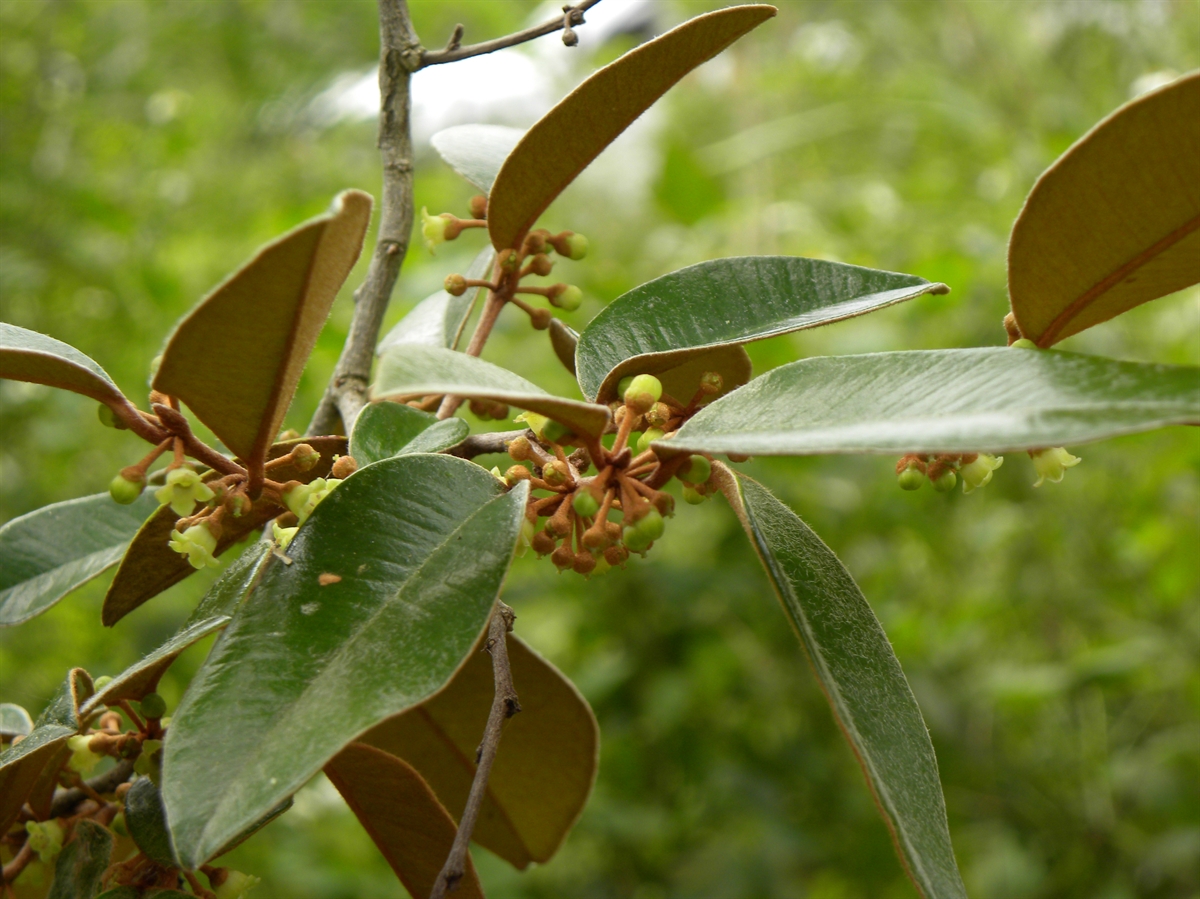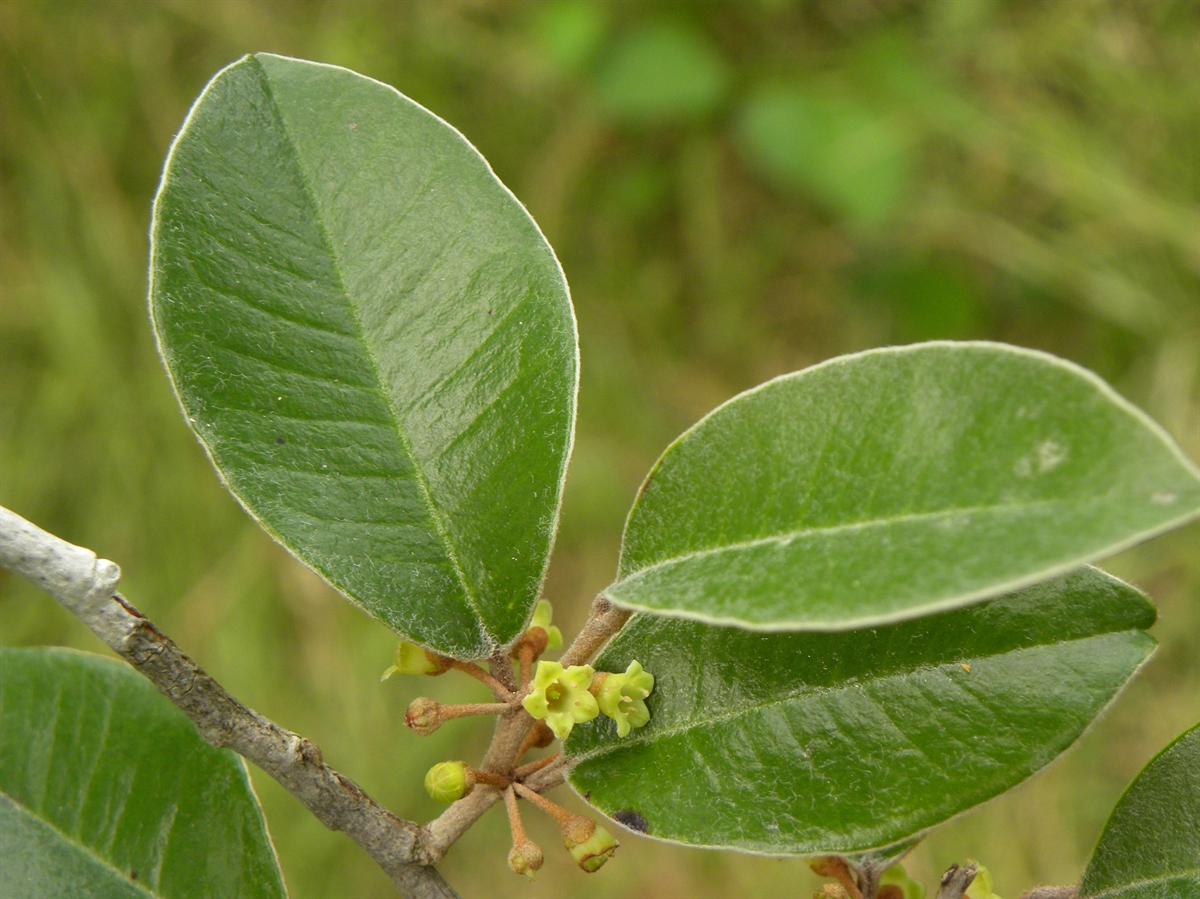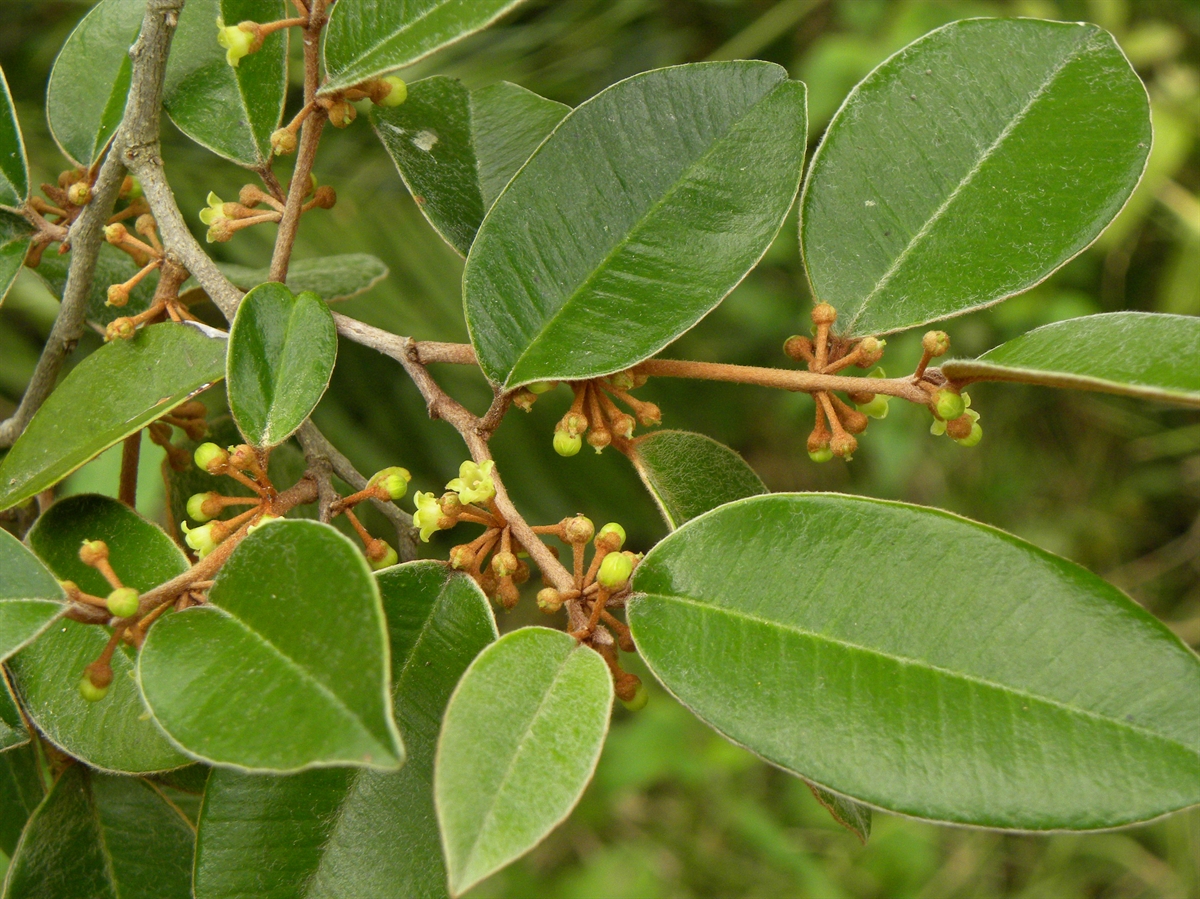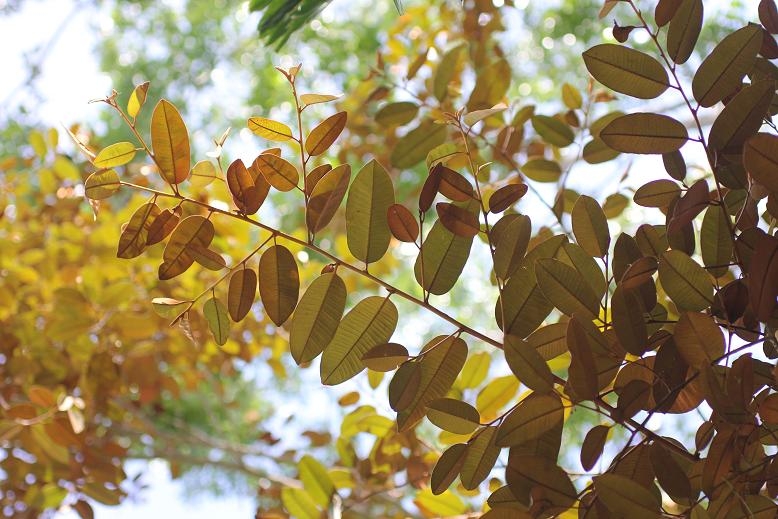Habit: Chrysophyllum oliviforme grows as a medium to large tree up to 17 meters in height. The leaves are arranged alternately, to 10 cm in length, ovate with an acuminate leaf apex and entire margin. The adaxial surface is dark green and glabrous and the abaxial surface is covered with reddish brown, tomentose, pubescence.
The complete, prefect, actinomorphic flowers are arranged in groups of 2-9, arising in the axils of leaves. The calyx has 5, unfused, brown pubescent sepals. The corolla has 5, white, fused petals. There are 5 stamens fused to the corolla. The ovary is superior with 5 locules and numerous seeds. The fruit is a purple/black berry at maturity.
Habitat: Chrysophyllum oliviforme grows in Dry Broadleaf Evergreen Formation – Forest/Woodland/Shrublands (coppice and scrublands).
Distribution: Chrysophyllum oliviforme grows in the central and northern island groupings of the Lucayan islands but also in the extreme south (Turks and Caicos Islands), as well as Florida and the Greater Antilles. It is also found in Honduras and is now cultivated around the world.
Medicinal/Cultural/Economic usage: Chrysophyllum oliviforme is used in the Lucayan Archipelago to treat circulatory problems.
The fruits are edible.
Chrysophyllum oliviforme is used in the horticultural industry for the interesting contrast between the adaxial and abaxial leaf surfaces.




